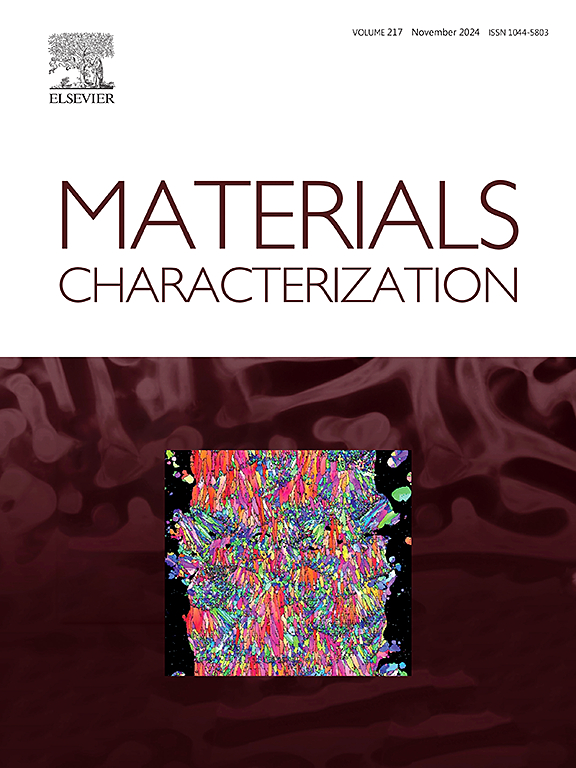电磁冲击处理引起应力状态变化的无损表征
IF 4.8
2区 材料科学
Q1 MATERIALS SCIENCE, CHARACTERIZATION & TESTING
引用次数: 0
摘要
电磁冲击处理(EST)可以对金属的应力状态进行定制,其主要特点是破坏法。本工作旨在提出一种有效表征EST引起的应力状态变化的无损方法。在增大电流密度(40 A/mm2 ~ 71 A/mm2)时,矫顽力呈现非线性响应,其中在47.5 A/mm2 ~ 62.5 A/mm2电流密度下矫顽力明显减小。在EST有效参数下进行多尺度应力表征,x射线衍射(XRD)结果表明,位错密度降低35.2%,残余应力降低35.9%,表明EST后残余应力得到释放,准原位电子背散射衍射(EBSD)和透射电子显微镜(TEM)结果表明,局部应力得到释放和均匀化。磁畴表征表明,随着应力浓度的降低和均质化,应力对畴壁的钉钉效应减弱,有利于反磁化,降低矫顽力。通过建立矫顽力、应力和电流密度之间的数学模型来表征EST作用下的应力状态,表明矫顽力测量在进一步定量表征应力状态方面具有重要的潜力,特别是在EST应用下。本文章由计算机程序翻译,如有差异,请以英文原文为准。

Nondestructive characterization of stress state changes induced by electromagnetic shocking treatment
The stress state of metals can be tailored by the electromagnetic shocking treatment (EST), which is mainly characterized by destructive method. This work aims to propose a nondestructive method to characterize the stress state changes induced by EST effectively. The coercivity shows nonlinear responses under increasing current density (40 A/mm2–71 A/mm2), in which the coercivity has decreased significantly under the current density of 47.5–62.5 A/mm2. Multi-scale stress characterization is utilized at the effective EST parameter, the X-ray diffraction (XRD) results show that dislocation density decreases by 35.2 % and the residual stress decreases by 35.9 %, revealing that the residual stress has been released after EST. The quasi-in-situ electron backscatter diffraction (EBSD) and transmission electron microscopy (TEM) results indicate that local stress has been released and homogenized as well. The characterization of magnetic domain suggests that the pinning effect of stress on domain walls (DWs) will decrease as the stress concentration is decreased and homogenized, which facilitates the reverse magnetization and decreases coercivity. A mathematical model among coercivity, stress and current density has been established to characterize the stress state under EST. This study demonstrates the significant potential of coercivity measurement in further quantitatively characterizing the stress state, especially under the applications of EST.
求助全文
通过发布文献求助,成功后即可免费获取论文全文。
去求助
来源期刊

Materials Characterization
工程技术-材料科学:表征与测试
CiteScore
7.60
自引率
8.50%
发文量
746
审稿时长
36 days
期刊介绍:
Materials Characterization features original articles and state-of-the-art reviews on theoretical and practical aspects of the structure and behaviour of materials.
The Journal focuses on all characterization techniques, including all forms of microscopy (light, electron, acoustic, etc.,) and analysis (especially microanalysis and surface analytical techniques). Developments in both this wide range of techniques and their application to the quantification of the microstructure of materials are essential facets of the Journal.
The Journal provides the Materials Scientist/Engineer with up-to-date information on many types of materials with an underlying theme of explaining the behavior of materials using novel approaches. Materials covered by the journal include:
Metals & Alloys
Ceramics
Nanomaterials
Biomedical materials
Optical materials
Composites
Natural Materials.
 求助内容:
求助内容: 应助结果提醒方式:
应助结果提醒方式:


